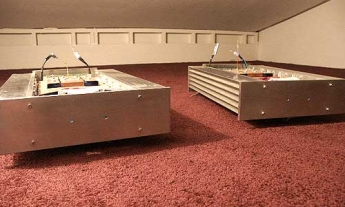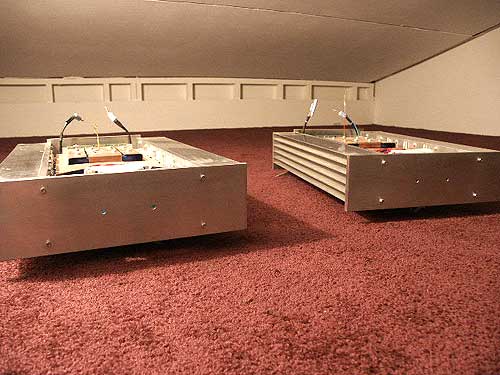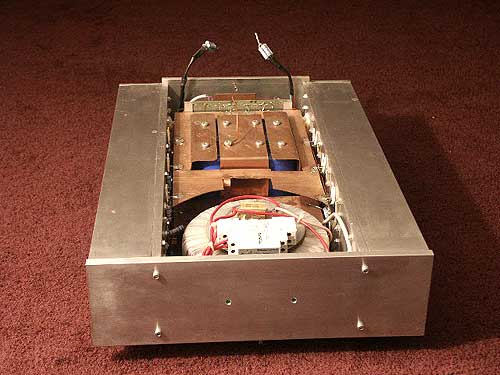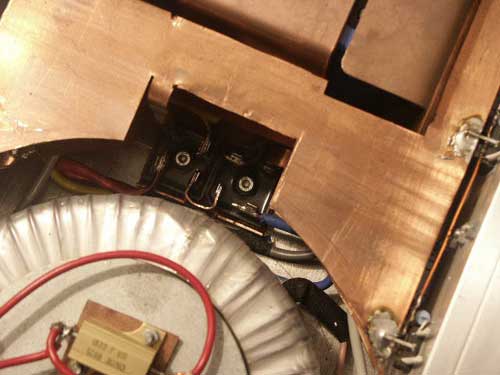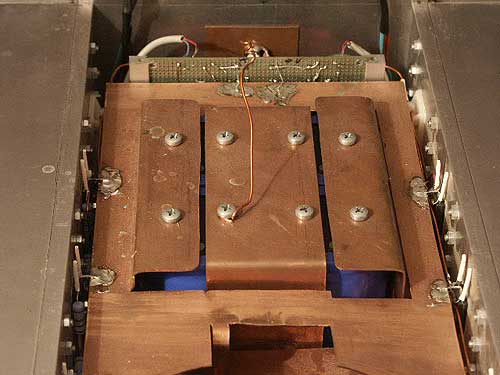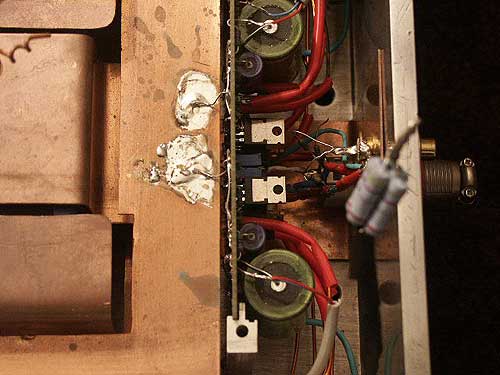Miscellaneous Projects
About me
My name is Jan van Kersen, I am from the Netherlands, where I build a pair of A5's that I want to use to bi-amp my two-way loudspeakers.
The amps are basically the base of the loudspeaker stands (loudspeakers are not shown) and are stereo, but with a single input. Each speaker unit (tweeter and woofer) now has a separate 60 Watt Amplifier circuit.
I tried it using a passive x-over, and it sounded very, very good. Tremedous soundstage/depth and, perhaps even more important, very great ease. It feels like there is plenty of power so the music never gets harsh so you run to the volume control when some crescendo sets in. It always sounds very natural and big. The X-over I use are simple first-order designs, with a ''Sine-Cap'' Hi-pass. Sine-Cap was used by Sonus Faber in their Extrema design and is basically a attenuating resistor in series with the tweeter an a coil in parallel over the tweeter. This way you can make a first-order hi-pass without series capacitor. Although is uses more amplifier power, the result is very clear. More dynamics, more detail and a more natural sound.
I will try to use the HI-Low Pass when the project is published.
There are some unusual aspects in these executions of your Amplifier circuit. The use of wire is reduced to the max. The only wire you see on the pictures is from the leds in front and from the mosfets to the loudspeaker terminals that stick out because there is no loudspeaker placed on them.
- The transformer outputwindings(1000VA 24V) are directly connected to the two rectifiers. - The rectifiers are directly connected to the power supply-rails and electrolytics (4x68.000mf) - The power supply-rails are directly connected the the power mosfets and the input circuitry - There are two layers of copperplates that serve as power supply-rails - All connections to the input circuit are made by component leads. there is no additional wire used. - The connection from the input (cinch or XLR) are made with the input-resistors and no additional wire - There is no input capacitor to the diff pair - The current-inrush suppression is by a time relay that shortens a 18 Ohms power resistor that is initially in series with the transformer, but by-passed after 3 seconds or so.
I could not find a matching heatsink, so I had to make them myself. For this design I used six L-shaped aluminum profiles that are bolted to a 1cm thick aluminum plate. I don't know the thermal resistance, but I can assure you they run HOT. appr. 55deg. Celsius (I don't know how much that is in Fahrenheit).
Compared to a conventionally build circuit, this design sounds clearer, there is no "electronic veil". It sounds pretty much like a SOZ, but has more power and dynamic range. Therefore greater ease in sound and soundstage.
.(JavaScript must be enabled to view this email address)







